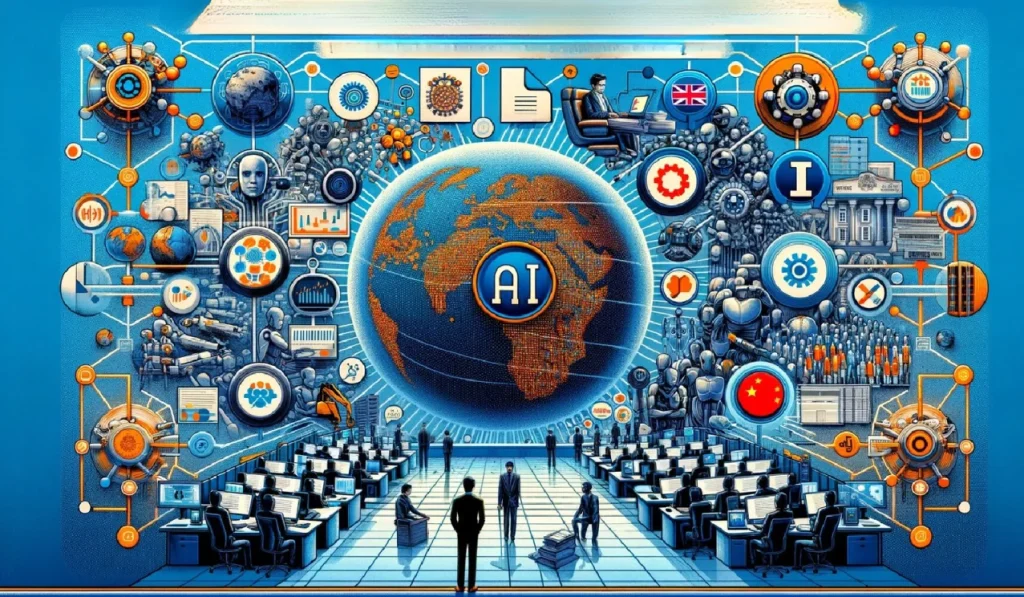SYLLABUS
GS-2: Important aspects of governance, transparency and accountability, e-governance- applications, models, successes, limitations, and potential.
GS-3: Science and Technology- Developments and their Applications and Effects in Everyday Life.
Context:
Recently, the Ministry of Electronics and Information Technology has introduced new AI Governance Guidelines to promote safe and responsible artificial intelligence adoption while enabling innovation across sectors.
More on the News
The India AI Governance Guidelines were released under the IndiaAI Mission.
- The IndiaAI Mission is a strategic initiative approved in March 2024 to make India a global leader in AI by building a comprehensive ecosystem for innovation, using AI for public good, and democratising its benefits across society
The framework was unveiled by the Principal Scientific Adviser and senior officials from MeitY.
The guidelines focus on human-centric, innovation-friendly and risk-aware AI deployment.
The launch comes ahead of the India AI Impact Summit 2026.
- The India AI Impact Summit 2026 will be held in New Delhi and will bring together global leaders and researchers to discuss artificial intelligence for development.
Artificial Intelligence (AI)
- AI is the ability of machines to perform tasks that normally require human intelligence.
- It enables systems to learn from experience, adapt to new situations, and solve complex problems independently.
- AI uses datasets, algorithms, and large language models to analyse information, recognise patterns, and generate responses. Over time, these systems improve their performance, allowing them to reason, make decisions, and communicate in ways similar to humans.
Key Highlights of the Guidelines

- The India AI Governance Guidelines aim to ensure safe and responsible use of artificial intelligence across sectors in India.
- The framework is based on seven guiding principles that include trust, people centricity, equity, accountability, responsible innovation, safety and resilience.
- The guidelines provide recommendations across six pillars that include governance, risk management, skilling, data infrastructure, innovation and international cooperation.
- The framework highlights a hands-off and enabling approach rather than a strict regulatory mechanism for AI at present.
- The government indicates that no immediate standalone law on artificial intelligence is planned and that existing laws will be used wherever necessary.
- A phased action plan has been proposed with short-term, medium-term, and long-term goals for implementation.
- The guidelines emphasise the use of innovation sandboxes for testing high-risk AI systems in controlled environments.
- The guidelines were drafted by a high-level committee chaired by a professor from IIT Madras with participation from industry, academia and government experts.
- The government maintains that the guidelines will help India become a global model for inclusive and responsible AI governance.
Significance of AI Adoption in India
- AI adoption can enhance governance and service delivery by integrating digital public infrastructure into intelligent systems that improve efficiency and inclusion.
- AI-driven innovation can boost economic growth by supporting new industries, improving productivity and enabling India to strengthen its position in the global AI economy.
- Responsible and human-centric AI systems can help address social challenges in sectors such as healthcare, education, agriculture and climate management.
- Structured AI governance with risk mitigation ensures public trust and prevents harms while allowing start-ups, researchers and industry to experiment and scale solutions safely.
Way Ahead
- India possesses a vast population, increasing internet connectivity, a strong IT/tech-services ecosystem and rich datasets (especially via public infrastructure), which together create fertile ground for AI adoption and innovation.
- However, while the opportunities are large, India must simultaneously address infrastructure gaps (e.g., compute, connectivity), skill shortages, data governance issues and equitable access — otherwise AI adoption could exacerbate inequalities.


